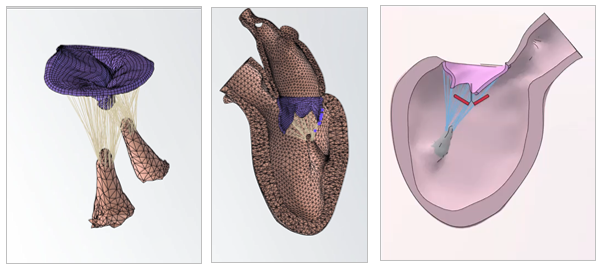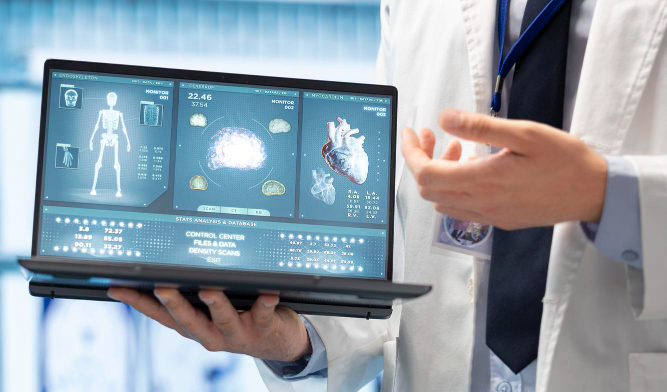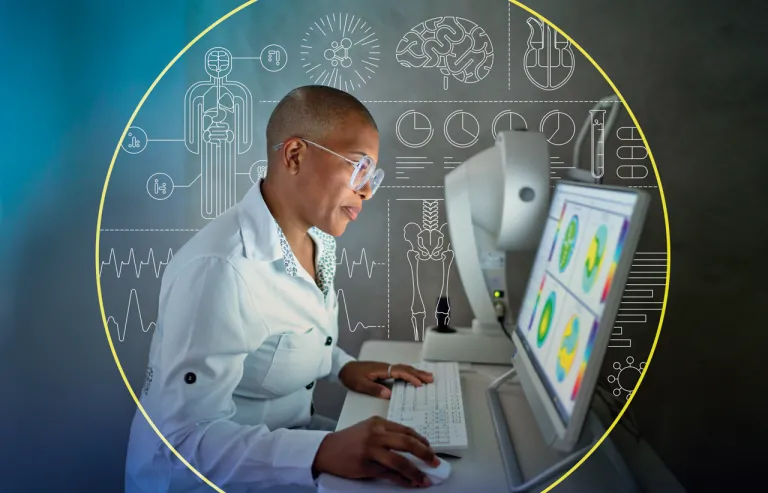The life sciences and healthcare industries have seen tremendous change over the last decades. With advancing technologies like artificial intelligence, big data, and 3D printing, the need for improved, customized, and accurate healthcare solutions has surged exponentially. In such a scenario, products such as CATIA and 3DEXPERIENCE—historically applied in industries like aerospace, automotive, and manufacturing—are taking centre stage to transform the life sciences and healthcare industries.
CATIA, the world’s most powerful 3D design software created by Dassault Systems, is already well known for its capacity to manage sophisticated and highly detailed models. Combined with the 3DEXPERIENCE platform, an open innovation environment that allows product development processes to be merged, CATIA and 3DEXPERIENCE are empowering doctors, engineers, and designers to collaborate better, deliver higher-quality products, and enhance patient care.
Here is how these solutions are transforming life sciences and healthcare:
Transforming Medical Device Design
The most straightforward application of CATIA in medicine is in the design and development of medical devices. A prosthetic limb, a heart valve, or a sophisticated diagnostic device – each requires precision and reliability. CATIA’s powerful 3D design feature enables engineers to design extremely customized solutions that fit the rigorous standards of the medical community.
Personalized Prosthetics and Implants: By leveraging CATIA’s parametric modelling and 3D scanning features, doctors can create prosthetics or implants that are specially designed to meet the unique anatomy of each patient. This ensures improved patient results, reduced recovery time, and more comfortable fits.
Medical Equipment Innovation: CATIA enables the design of complex geometries that are required for medical equipment such as MRI machines, surgical robots, and diagnostic equipment. The software enables the miniaturization of components while enhancing functionality and performance, a crucial factor in medical settings where there is limited space and where functionality and performance are imperative.
Prototyping and Simulation: Using 3DEXPERIENCE, designers can simulate the behaviour of these medical devices in real-life situations. This means they can test for stress, durability, and material performance so that the products are compliant with all the safety and regulatory requirements before they enter production.
-
Improving Product Performance Using Simulation
In the medical field, product testing in actual conditions can be costly and time-consuming. Having the capability to virtually simulate medical device performance prior to making physical prototypes is revolutionary.
With CATIA’s simulation capabilities embedded in the 3DEXPERIENCE platform, product designers can experiment how their medical devices will behave in different conditions. Not only does this assist in making the products more reliable, but it also cuts costs through early detection of issues during the design phase.
Finite Element Analysis (FEA): FEA capabilities in CATIA assist in modelling how materials will react to forces, heat, or fluid flows. In a prosthetic limb, for instance, engineers can design materials to endure the stresses of use without failing.
Fluid Dynamics & Thermal Simulation: Insulin pumps or drug delivery devices must operate under specific conditions. CATIA allows for simulations to verify how the devices will cope with thermal loads or fluid flows so that they will work as expected when utilized by patients.

-
Collaborative Work Across Disciplines with 3DEXPERIENCE
The creation of medical devices and healthcare products typically requires a multidisciplinary team of experts, ranging from engineers and designers to physicians and regulatory experts. The 3DEXPERIENCE platform facilitates easy collaboration between these disciplines in real time, with everyone on the same page throughout the development process.
Centralized Data Management: In 3DEXPERIENCE, all project information—design files to test data—are kept in a central location, which everyone can access. This eliminates data silos and minimizes the risk of error or miscommunication among team members.
Cross-Functional Collaboration: The platform enables healthcare professionals to collaborate more easily with engineers and designers. For example, surgeons can offer input on the design of a new surgical instrument, ensuring that it is suitable for actual use. This leads to improved products and quicker iterations.
-
Streamlining Regulatory Compliance and Documentation
The life sciences and healthcare industries are regulated very tightly to maintain patient safety. Conformity with standards such as the FDA or ISO certifications is mandatory for all medical products released into the market. 3DEXPERIENCE facilitates the process of regulatory compliance by ensuring all product development stages are documented and traceable.
Automated Compliance Tracking: The 3DEXPERIENCE platform can automatically monitor design changes, test results, and regulatory documents so that they all meet the set standards. This saves time for audits and compliance checks, shortening the product development cycle.
Streamlined Documentation: The platform makes it simple to manage key documents like design reviews, test reports, and approval certificates, which are necessary for regulatory inspection and certification.

-
Customized Healthcare and Treatment Solutions
Healthcare of the future is becoming more customized, with treatment and medical devices being designed and customized to specifically address the individual needs of the patient. The demand for specialized medical devices and solutions is arising from this direction, and CATIA is exactly what is needed to address the challenge.
Personal 3D Models for Patients: Through 3D scanning technologies, doctors can build a virtual representation of a patient’s anatomy to use either for implant design or building a surgical instrument. With the capable modelling capabilities in CATIA, engineers can subsequently alter these models to build highly customized solutions.
Personalized Drug Delivery Systems: With the expanding discipline of personalized medicine, customized drug delivery systems have made strides forward. CATIA enables designers to design systems to deliver drugs to exactly where they are required, according to the individual’s distinct physiology.

-
Streamlining the Healthcare Supply Chain
The supply chain for the healthcare sector is complicated, ranging from the production of medical devices to making sure that life-saving medicines are delivered to patients in time. 3DEXPERIENCE optimizes such processes by offering a single, unified platform for handling product design, manufacturing, and logistics.
Real-Time Collaboration with Suppliers: The platform allows manufacturers to collaborate with suppliers in real time, ensuring that the materials are up to the specified standards and production schedules are met.
Supply Chain Transparency: 3DEXPERIENCE provides end-to-end visibility of the supply chain, enabling manufacturers and healthcare providers to spot issues ahead of time and reduce time spent in bringing products to market.
- Future Trends:
AI, 3D Printing, and Digital Twin Technology Looking ahead, AI and machine learning will continue to play a larger and more significant role in healthcare innovation. 3DEXPERIENCE is already incorporating these technologies into its platform, facilitating smarter, more effective product development processes.

AI-Driven Design Optimization: With increasing integration of artificial intelligence in CATIA, designers will be able to take advantage of AI algorithms to automatically suggest optimizations in real-time as well as learn from past design results.
3D Printing in Healthcare: 3D printing for the production of personalized medical devices and prosthetics is already on the rise, and CATIA is leading the charge. As 3D printing technologies continue to evolve, CATIA and 3DEXPERIENCE will remain at the centre of making high-quality, affordable custom healthcare solutions a reality.
Digital Twin for Healthcare Products: The Digital Twin approach, in which a virtual replica is developed for each physical product, is gaining popularity in healthcare. It enables real-time monitoring and optimization of medical devices to ensure they function efficiently during their lifespan.
Conclusion
The adoption of CATIA and 3DEXPERIENCE in the healthcare and life sciences sectors is revolutionary. These platforms are speeding up the design and development of medical devices, optimizing patient-specific solutions, and facilitating regulatory compliance. As the healthcare industry continues to adopt innovation, these platforms will be at the centre of developing safer, more effective, and personalized healthcare solutions. Through the strength of CATIA and 3DEXPERIENCE, healthcare professionals and engineers are shaping the future of medicine, one innovative design at a time.


